A cycling camera enables you to record your ride, either to share with the world or because a visual record can be useful if something happens to you while you’re out riding.
It’s rare that a road ride of any duration doesn’t include at least one close pass and if the worst happens, a visual record could make the difference between the police following up on an event and dismissing it because of a lack of evidence.
Here, we’ll go through the different options for using a cycling camera, where to mount it and how to use it to increase your safety – and that of other riders – by providing some recourse if you experience a dangerous event.
On a happier note, you may just want to record your ride to edit and create a record or to analyse your riding to improve your technique.
Why do cyclists wear cameras?
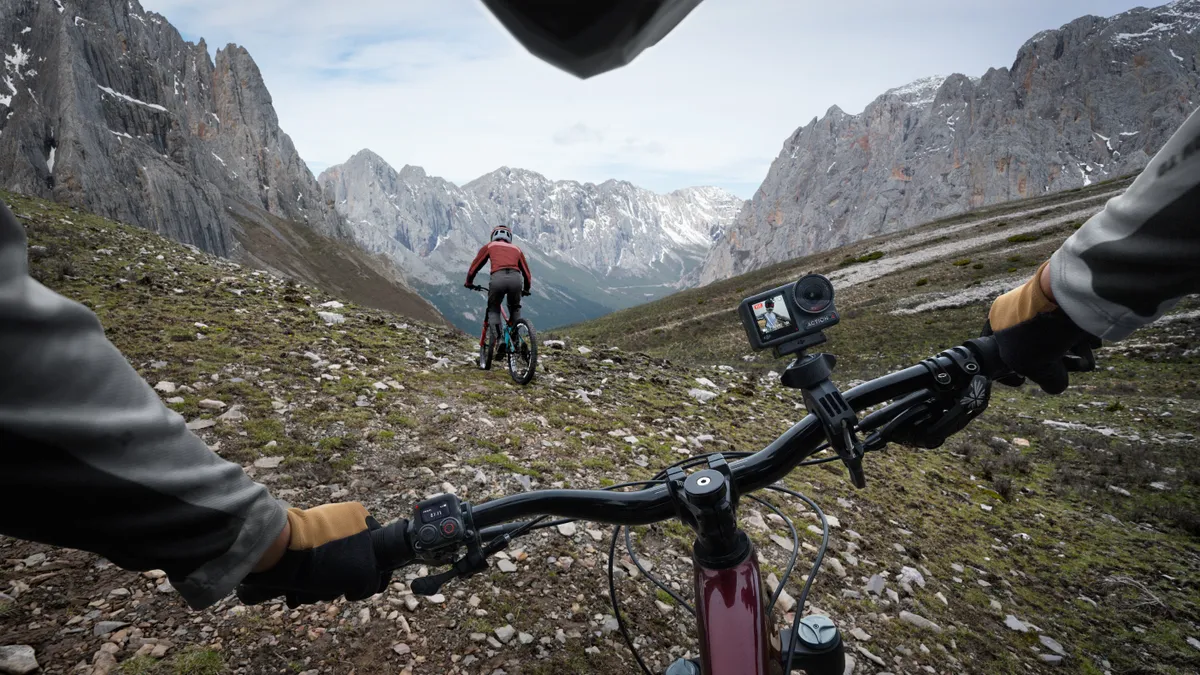
There are three main reasons why cyclists choose to wear an action camera.
The first is to record their ride for editing to produce a video. This may be to keep a record of a memorable trip or event, like the mountain biker who bumped into King Charles (not literally) on a trail in Scotland. It may also be to show off tricks and daring moves, particularly off-road.
Recording your riding can help you to see where you're making technical mistakes, particularly for mountain bikers and gravel riders, but also if you're looking to perfect your fast turns on the road.
The final, more pragmatic, reason is to have a record in case of an accident or incident while riding.
The police are more inclined to act on an incident if there’s a video record of what happened. Often, you can post video to a police website to report an event or hazardous driving such as a close pass.
Where is the best place to put a bike camera?
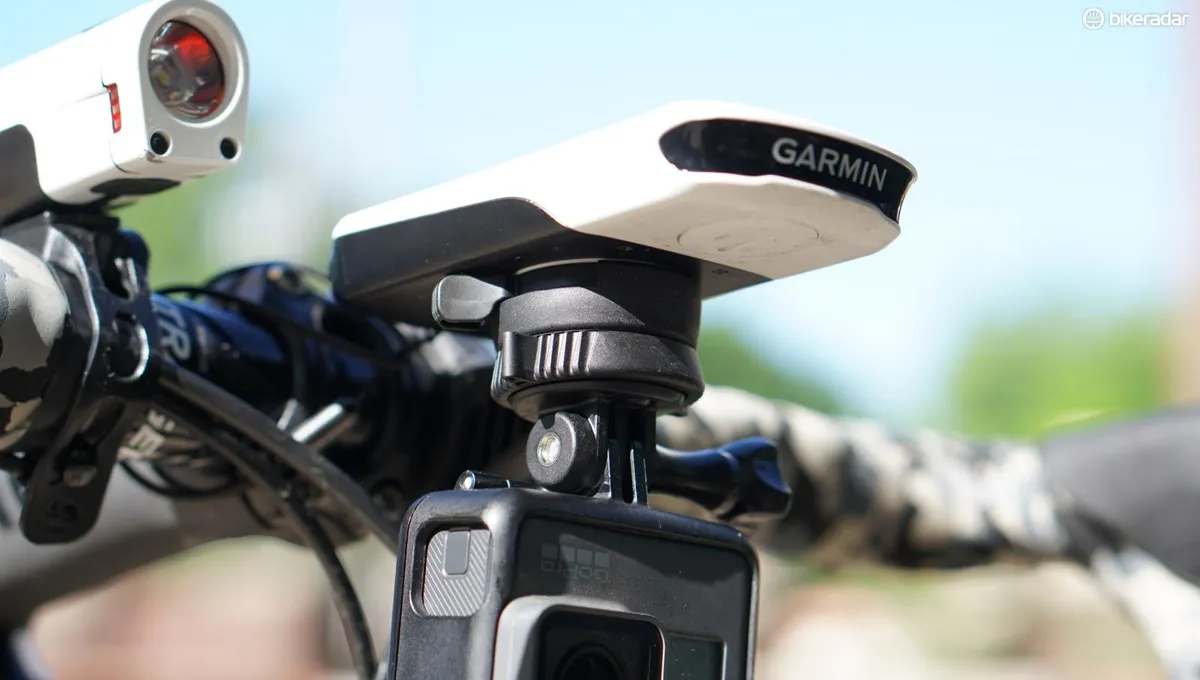
There are two main choices in where to mount a bike camera: on the bike itself or on you.
Bike-mounted cameras may be forward-facing or rear-facing. Forward-facing cameras are typically mounted on the handlebars or the stem. Many bike cameras use the GoPro mount standard, which enables them either to be fitted to a dedicated bar mount or below an out-front mount for a cycling computer.
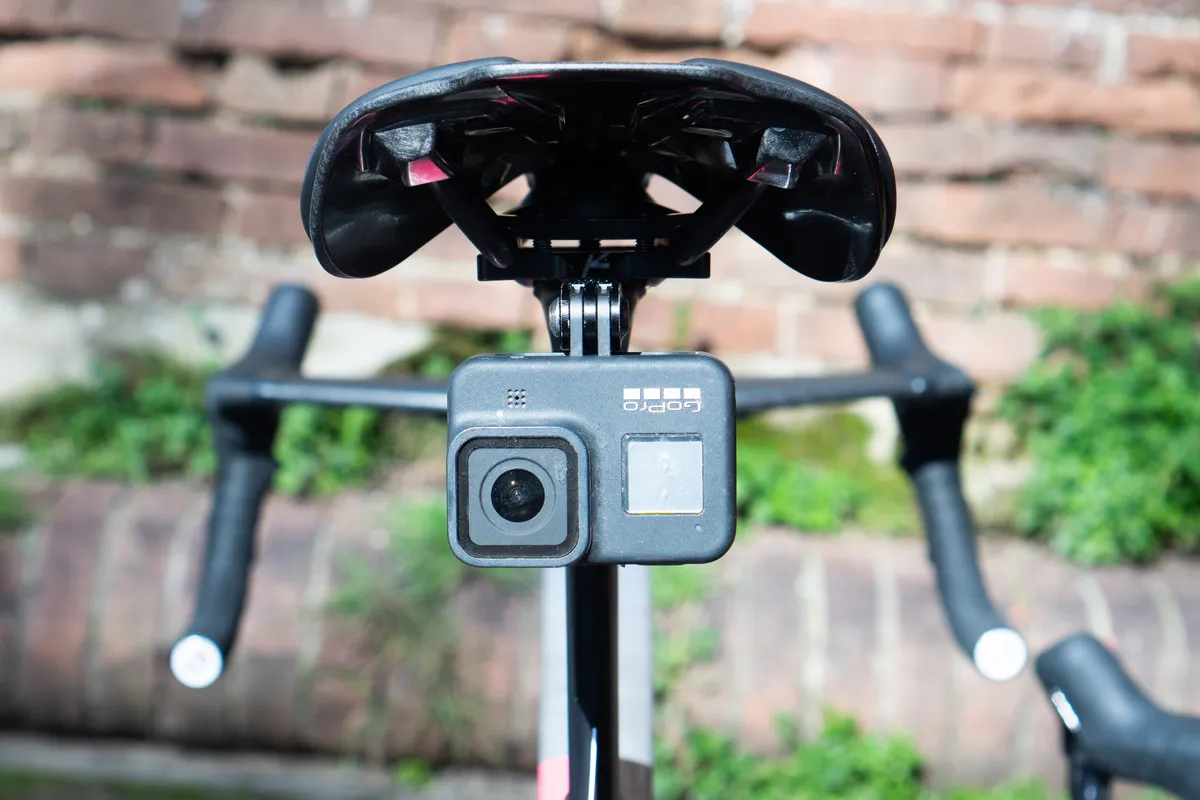
Rear-facing cameras are usually attached to the seatpost, with a mount that’s separate from the camera and includes a strap or a rubber band to hold it in place. These cameras are typically attached to the mount and detached from it using a quarter-turn system.
Another option for the creatives is to hold the camera as you shoot. A form of image stabilisation, such as the gimbal system in many of DJI’s cameras is advantageous. Some DJI cameras include a built-in extension rod for a wider field of view.
You can buy a 114cm-long carbon fibre selfie stick for the Insta360 One RS, which doesn’t appear in your shots, for a drone-like view as you ride. There’s also a 3m version available, although this might be awkward to ride with.
GoPro sells a boom with a bar mount, which includes two 25cm carbon fibre extensions, to which further extensions can be added. It also has an aluminium selfie pole, which telescopes from 25cm to 122cm long.
If you decide to mount the camera to yourself, a helmet mount will give the camera a good view and keep it out of the way, although it may feel heavy and you need to take care when cycling under trees.

You can also use a harness or other system to attach your camera to your chest, where video will have a more immediate feel, rather than the more helicopter-like view from a helmet-mounted camera.
While some cameras have a lens that records a forward-facing view, others can record 360-degree video. For these, a helmet mount or a bar mount makes best use of their field of view. It’s handy to have a bar-mounted remote if you mount the camera somewhere less accessible, such as atop a helmet.
Different types of cycling camera
Most cycling cameras offer multiple mounts for different points of attachment to you and your bike. Some cameras include a range of mounts with the camera, while for others mounts are an additional cost.
You can usually choose where to mount your camera from a wide range of positions, so a single camera can serve multiple uses.
Cycling helmet cameras
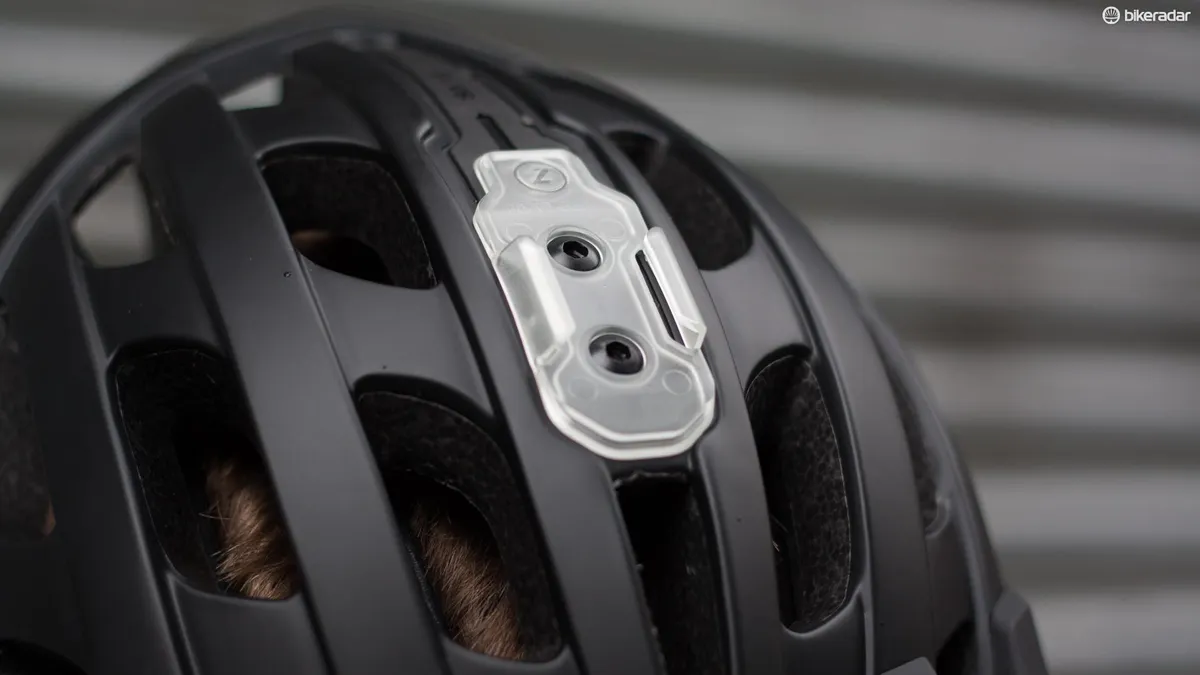
Helmet mounting is a good option for a less restricted view around you and is particularly useful for a 360-degree camera to make full use of its field of view.
Some helmets, particularly full-face MTB helmets, may include a built-in GoPro-style mount. In other cases, you can buy mounts as accessories, which use straps or a screw through a vent to secure them to the top of the helmet.
Cycling safety cameras
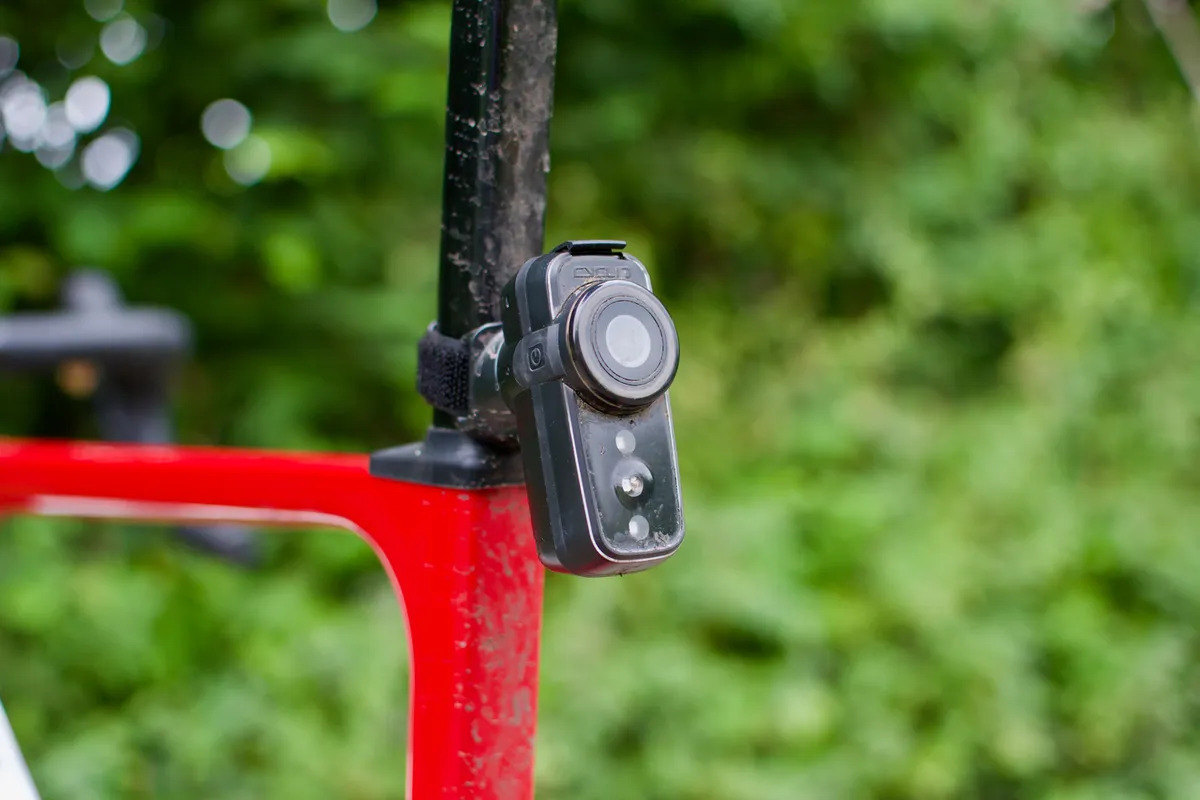
The major brand of dedicated cycling safety cameras is Cycliq, which sells the Cycliq Fly12 for front mounting and the Fly6 for rear mounting. The Fly12 includes a front light as well as the camera; the latest version has 4K24 maximum resolution or up to 120fps at 1,280x720 pixels.
The Fly6 incorporates a tail light and can record 1080p30 or 720p60 video. Both the Fly12 and Fly6 offer loop recording and the Fly12 includes image-stabilisation software.
A more expensive option for rear-facing video recording is the Garmin Varia RCT715. This can record 1080p30 or 720p30 video. It has the additional benefit of incorporating a rearview radar, which will alert you via a cycling computer or Garmin cycling watch to an approaching vehicle.
Both Garmin and Cycliq devices will auto-save video if they detect a sudden change of angle or speed, which might indicate a fall. You can also elect to save video manually if you are involved in an incident during a ride.
What about GoPros?
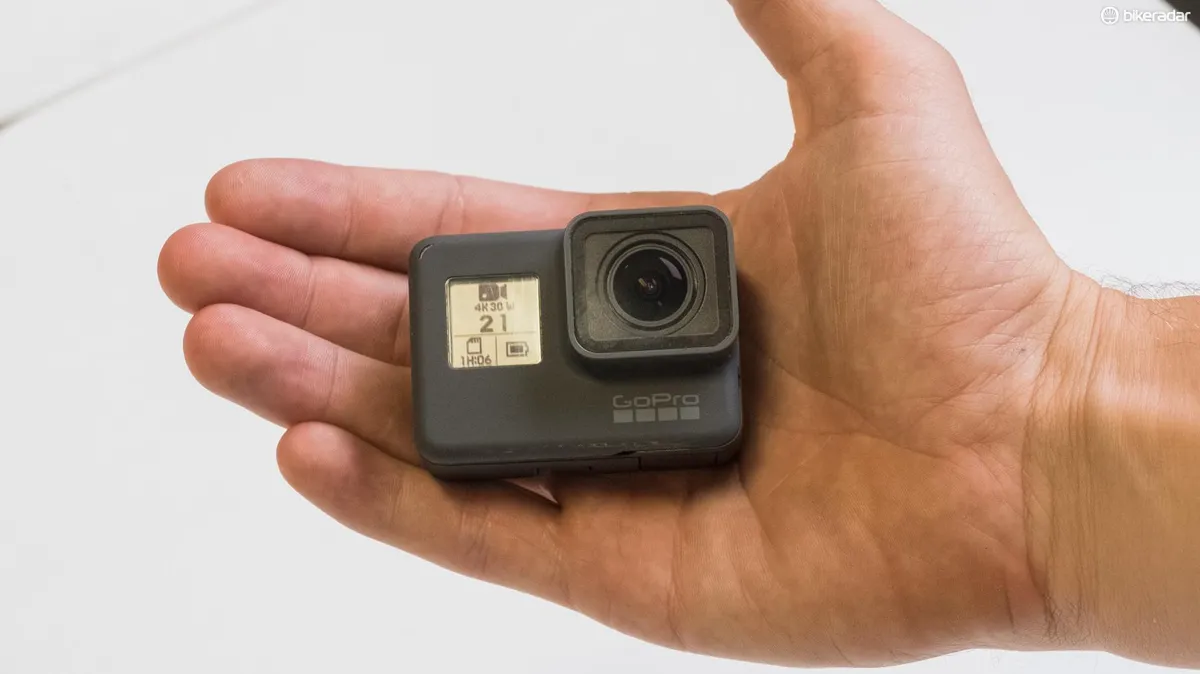
GoPro continues to be a major player in action cameras and offers a range of extras that enable you to mount your camera on a bike or to yourself. Competition from the likes of DJI and Insta360 has led GoPro to up its game in battery life, in which its older cameras were somewhat deficient.
The Hero12 Black has a claimed 1.5 hours' run time at 5.3K30 and over 2.5 hours at 1080p30, which GoPro says is double its previous cameras’ run times. GoPro will sell you an additional battery, enabling you to swap out if you need longer run time.
There are reports of GoPros overheating, although this is less likely to be a problem if you’re generating adequate airflow as you ride.
The GoPro mount is more-or-less a standard for mounting many action cameras and can be used to attach other accessories, including lights, to your bike.
Bike camera picture quality and recording time
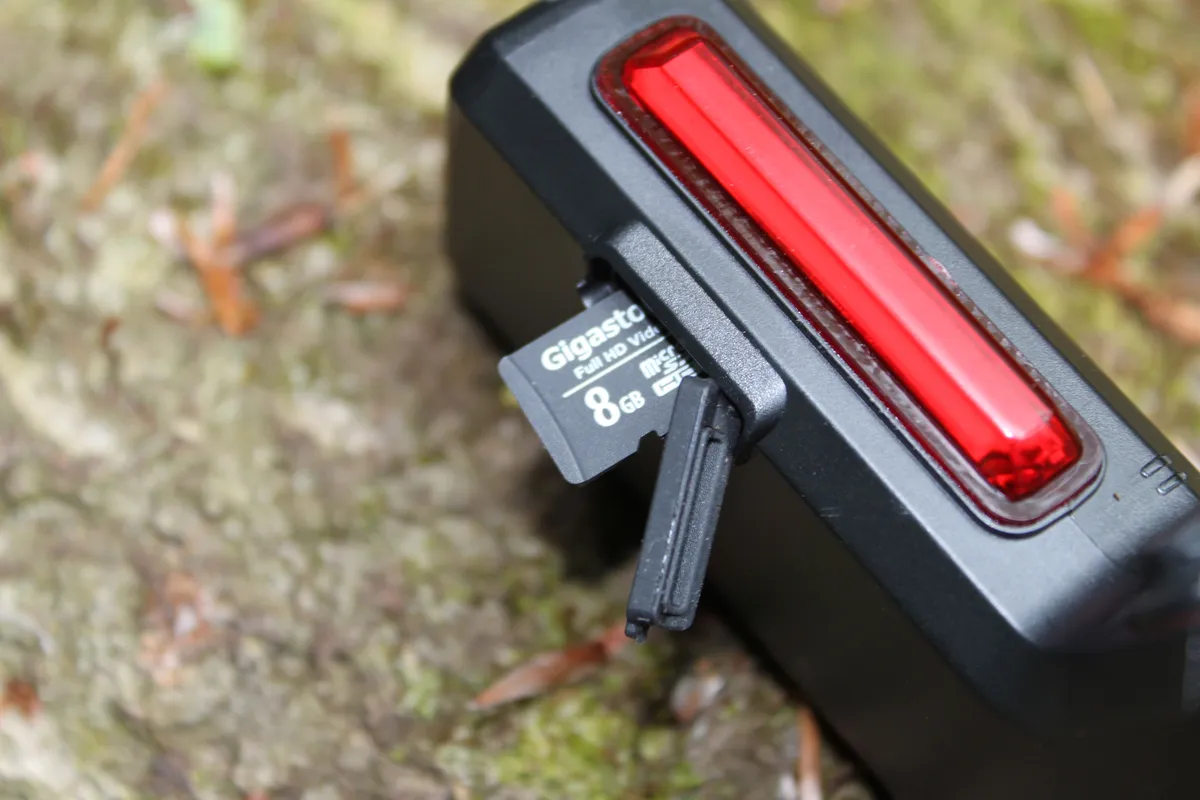
The two main limiters of how much you can store are the capacity of your memory card and the battery life of your camera. Both are impacted by the picture quality you want to use.
Almost all cycling action cameras can record in 1080p60 high definition and many will go much higher. The GoPro Hero12 Black, for example, can record 5.3K60 video as well as 4K120 and 2.7K240, offering higher frame rates for slo-mo video.
You can use the Hero12 Black with an SD card with up to 1TB capacity. Such a large-capacity SD card will add a sizeable chunk to the purchase price for your camera, but a 512GB card is now relatively inexpensive.
Built-in editing software and cycling camera apps
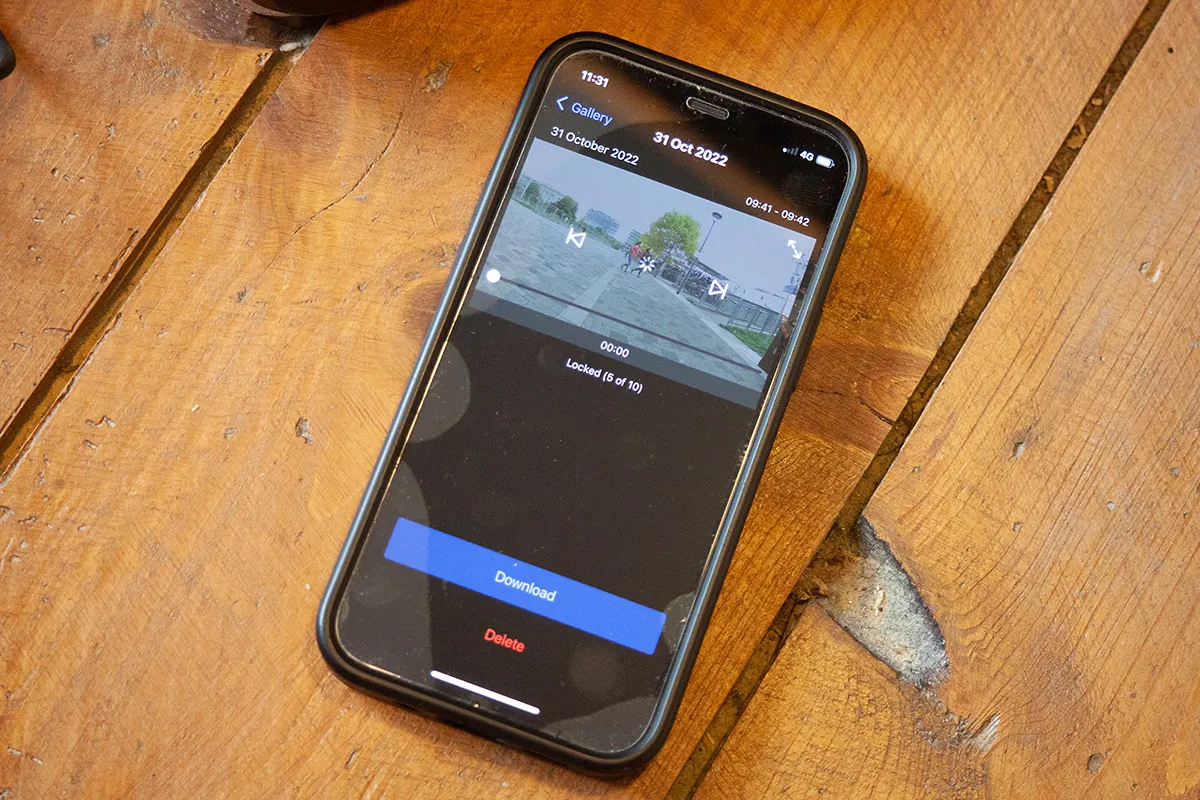
Whether you’re using your cycling camera to record your derring-do to post on YouTube, to analyse your riding or for safety reasons, you’re going to need to edit it at some point. No one wants to watch hours of footage of nothing much happening.
Most cycling cameras offer an editing software package as part of the deal, which usually runs on a smartphone. This enables you to cut and splice your footage and you can usually add overlays, whether that be speed, watts, time of day or anything else you can measure, often from a Strava feed.
Some editing software packages are easier to use than others, but in general they’re designed to make the editing process as simple as possible.
The Insta360Go editing software, for example, enables you to edit quickly on your phone, add overlays and a soundtrack, and post to YouTube. DJI claims its LightCut app offers one-touch editing on a smartphone, as does GoPo with its Quik app.
Video footage quickly fills up SD cards and other local storage, so there may be cloud storage incorporated, with the option to purchase more if you need it. An annual subscription to GoPro, for example, costs $50 and enables you to store unlimited footage, as well as offering additional benefits such as free replacement for a damaged camera.




